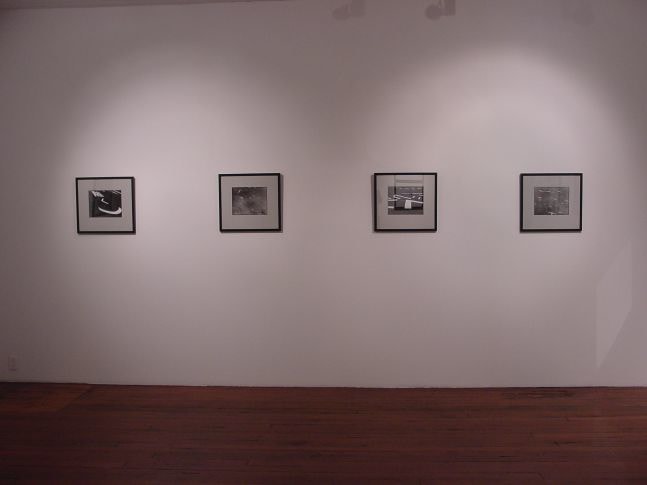
How does one write about the ineffable? What can possibly be said about the purely visual phenomenon that does not compromise its essence? We talk and write about visual art and photography because we feel we must if we are to discover its meaning. Nasreen Mohamedi's photographs seem to defy an articulation in our desire to assign meaning to them. It is possible to describe, if not define these photographs and make some discoveries in the process.
Nasreen worked on photographs throughout her working life but never exhibited them. It was in this show at the Talwar Gallery in New York (September 8, 2003 - January 30, 2004) that they were exhibited in their entirety for the first time in America. These black and white photographs remain a substantial body of work and reveal some of her formalist concerns with spatial investigations and the effects of light as vital components. Both these elements are observed in these photographs, making available compositions that are seen spatially and visually in natural as well as in artificial light. These photographs provide a material basis for her concerns for a formal aesthetic, an aesthetic Nasreen worked at achieving from the time when there were few others of her kind.
Among the first few postindependence women artists, Nasreen was in search of a language that was emblematic of change and forming a deeper understanding of the self as an individual identity. She became a visible presence on the art scene in India around the late 1950s, a decade that saw the emergence of women artists such as Meera Mukherjee who trained in Calcutta and Germany and Arpita Singh in Delhi, to name two. (Nasreen herself trained in St Martin's, London.) During this time her Indian contemporaries Tyeb Mehta, Arpita Singh, Gulammohammed Sheikh amongst others were working in an idiom that was structured in figurative art. Nasreen on the other hand chose not to adapt their visual vocabulary but developed her own personal sense of aesthetics, using pure abstraction to create a language of a minimalist practice. She achieved this through a selective process of interrogation. Nevertheless, Gaitonde who was much senior was her Indian mentor in the early 1960s - a precedent for her search for pure abstraction in Indian contemporary art. However, in the history of modern Indian art, Nasreen's work might best be placed alongside that of artists whose quest has been to find the abstract sublime. Those who aspire through nonrepresentational means to a "spiritual otherness· ...
Perceptually acute, Nasreen's photographs reflect her interest in architectural spaces, the paved courtyard of Fatehpur Sikri, urban streets, crossings, storage tanks, and textile looms - that are reduced to skeletal patterns of horizontal, vertical, and diagonal lines. She traverses a variety of real spaces, which reflect her minimalist concerns with geometry, an abstract system of order concerned with the relationship between shapes. It is also an ideal. It refers to perfection of form that does not actually exist within the natural world. In contrast, Nasreen's images abstracted from nature are irregular and imperfect - these photographs are about perfection as we are aware of it in our minds.
"The need to take from an outer environment and bring It an inner necessity: Nasreen's photographs of the ocean in Kihlm near Mumbai where she spent a great deal of time, served as a referent to create visual and tangible biomorphic forms. These photographs are about lightness, about merging, formlessness, and the breaking down of form to create a field of vision that one would experience on looking at the ocean with all its intricacies.
Nasreen has extended her visual language from one that embodies densely focused fields of opaquely photographed surfaces to one whose vocabulary stresses vaporous emanations of ethereal light, intimate tone, and texture, making them potent components of her evolved visual language. Her sympathies are serenely secular, poetic, and nonspecific. One does not necessarily find meaning In her works, in the conventional sense, any more than one finds an image. Her photographs require from the viewer a predisposition to see what is and what is not present, to accept what is visible and available. There is no narrative. There is light, line, proportions, and energy. One has to feel the special energy of the works and engage with their unique dynamics. They are resonant evocations of the artist's spirit and concerns. They are alive with gentle emanations.
"One creates dimensions out of solitude .. " Nasreen has created these very dimensions in her photographs. They are evocations and cadences of light, form, and tonal variations, each an individual issuance of ethereal rhythms. Simultaneously powerful and gentle, they are spartan works, beautiful without the slightest adornment. You could "hear" them with your eyes ... silent sounds ...
A silence that permeated the gallery space...
-Marg